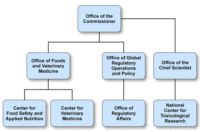While time is running out for small farms to comply with the FSMA Produce Rule (Standards for the Growing, Harvesting, Packing and Holding of Produce for Human Consumption), the FDA released a 172-page draft guidance for the Produce Safety Rule at the end of October, with a six month comment period. For a complete listing of FSMA final rules and compliance dates, see the FSMA key dates calendar.
The draft guidance provides a broad range of recommendations on how to meet the requirements for most subparts of the rule. It also outlines how to determine whether produce or farms may be eligible for exemptions from certain requirements, or from the rule in its entirety. More information can be found on FDA’s draft guidance for industry webpage.
In addition, FDA released a 71-page document entitled “Guide to Minimize Food Safety Hazards of Fresh-cut Produce.” It explains the FDA’s current thinking on how fresh-cut produce processors—such as those that prepare bagged salad mixes and fruit salad—may comply with the requirements found in the Preventive Controls for Human Food Rule. The six-month comment period extends into March 2019.
A ninth allergen on the list?
The FDA issued a request for information on the prevalence and severity of sesame allergies in the US to inform possible regulatory action that would require labeling for sesame as an allergen. The comment period closes at the end of 2018.
The Federal Food, Drug and Cosmetic Act (FD&C Act) requires that a food containing a major food allergen declare the source. The law defines a major food allergen as one of the following: milk, eggs, fish (e.g., bass, flounder or cod), crustacean shellfish (e.g., crab, lobster or shrimp), tree nuts (e.g., almonds, pecans or walnuts), wheat, peanuts and soybeans. In addition to requiring the disclosure of these eight major food allergens, the act gives the FDA authority to issue regulations requiring the disclosure of spices, flavorings, colorings and incidental additives that are, or contain, allergens other than the eight major allergens. FDA is not restricted from requiring labeling regarding other food allergens.
In the case of allergens other than the eight major ones, avoiding them can be difficult in some cases for consumers who have allergies, because they may not always be specifically listed in the ingredient statement or identified by allergen labeling. An ingredient that contains a food that is not a major allergen may only be listed by its common or usual name. For example, in the case of an ingredient list declaring “tahini,” the source of the ingredient, sesame, is not included as part of the name listed in the ingredient statement. In addition, spice mixes, flavors and colors used as ingredients can be labeled generically without stating individual ingredients.
The comment period opened Oct. 30, 2018, and will remain open for 60 days. To submit electronic comments, go to www.regulations.gov and search for Docket No. FDA-2018-N-3809.
Finding refrigerated transportation remains difficult
Securing refrigerated transportation has been a real challenge for some processors since 2017, and it shows no signs of getting easier any time soon. Driven by continued economic growth, and the ongoing truck driver shortage, both truck rates and shipment volumes have set new records through the first half of 2018, according to USDA Agricultural Marketing Service’s “Agricultural Refrigerated Truck Quarterly.”
Indicators point to sustained high rates and tight capacity for the trucking industry, including the refrigerated truck market, through the end of 2018 and possibly beyond.
Overall economic growth during the first half of 2018 was consistent with increased truck shipment volumes and rates. Real gross domestic product increased 4.2 percent in the second quarter of 2018, the highest quarterly increase since the third quarter of 2014. Meanwhile, the unemployment rate fell through the first half of 2018 to 4 percent in June, while reaching a 10-year low of 3.8 percent in May, making it tough to attract truck drivers while other competitive jobs offer better pay—thus, higher transportation costs and fewer routes are becoming the norm.




